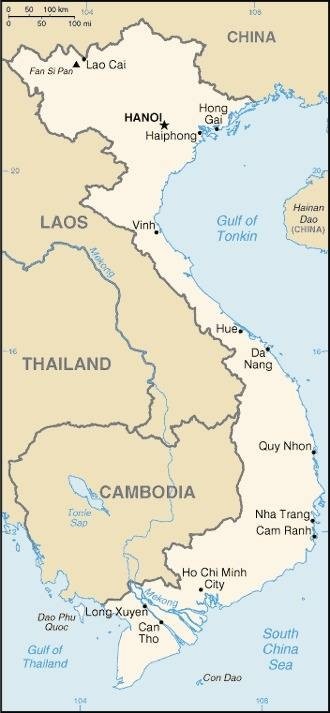
When Vietnam was reunified in 1975, the country had a youthful age structure and a high fertility rate. The population growth rate slowed dramatically during the next 25 years, as fertility declined and infant mortality and life expectancy improved. The country’s adoption of a one-or-two-child policy in 1988 led to increased rates of contraception and abortion. The total fertility rate dropped rapidly from nearly 5 in 1979 to 2.1 or replacement level in 1990, and at 1.8 is below replacement level today. Fertility is higher in the more rural central highlands and northern uplands, which are inhabited primarily by poorer ethnic minorities, and is lower among the majority Kinh, ethnic Chinese, and a few other ethnic groups, particularly in urban centers. With more than two-thirds of the population of working age (15-64), Vietnam has the potential to reap a demographic dividend for approximately three decades (between 2010 and 2040). However, its ability to do so will depend on improving the quality of education and training for its workforce and creating jobs. The Vietnamese Government is also considering changes to the country’s population policy because if the country’s fertility rate remains below replacement level, it could lead to a worker shortage in the future.
Vietnam has experienced both internal migration and net emigration, both for humanitarian and economic reasons, for the last several decades. Internal migration – rural-rural and rural-urban, temporary and permanent – continues to be a means of coping with Vietnam’s extreme weather and flooding. Although Vietnam’s population is still mainly rural (66%), increasing numbers of young men and women have been drawn to the country’s urban centers where they are more likely to find steady jobs and higher pay in the growing industrial and service sectors.
Location: Southeastern Asia, bordering the Gulf of Thailand, Gulf of Tonkin, and South China Sea, as well as China, Laos, and Cambodia
Area: total: 331,210 sq km, land: 310,070 sq km, water: 21,140 sq km
Land boundaries: total: 4,616 km, border countries (3): Cambodia 1,158 km; China 1,297 km; Laos 2,161 km


Population distribution: though it has one of the highest population densities in the world, the population is not evenly dispersed; clustering is heaviest along the South China Sea and Gulf of Tonkin, with the Mekong Delta (in the south) and the Red River Valley (in the north) having the largest concentrations of people.
Major urban areas: 9.077 million Ho Chi Minh City, 5.067 million HANOI (capital), 1.786 million Can Tho, 1.382 million Hai Phong, 1.188 million Da Nang, 1.078 million Bien Hoa (2022); See top 20 cities listed below account for 23,734,000, only 22% of the total population of Vietnam.
Ethnic Groups: Kinh (Viet) 85.3%, Tay 1.9%, Thai 1.9%, Muong 1.5%, Khmer 1.4%, Mong 1.4%, Nung 1.1%, other 5.5% (2019 est.) note: 54 ethnic groups are recognized by the Vietnamese Government
Languages: Vietnamese (official), English (increasingly favored as a second language), some French, Chinese, and Khmer, mountain area languages (Mon-Khmer and Malayo-Polynesian)
Religion: Catholic 6.1%, Buddhist 5.8%, Protestant 1%, other 0.8%, none 86.3% (2019 est.) note: most Vietnamese are culturally Buddhist
